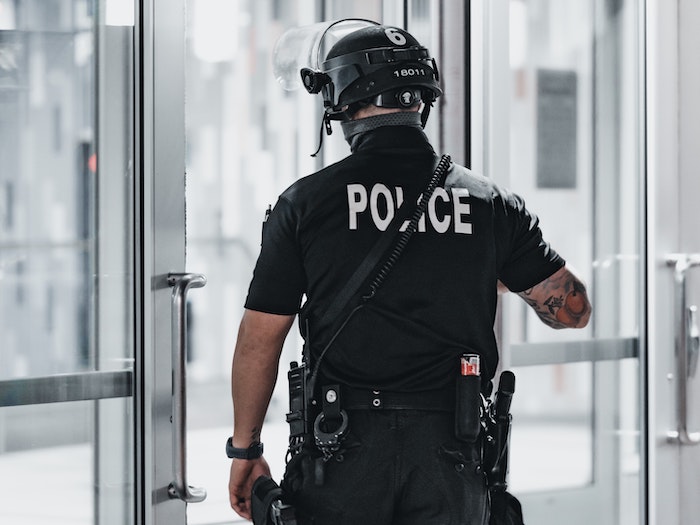In today’s era marked by mass shootings, worry over the safety of children in schools has increased, and understandably so. Since the 1999 mass shooting at Columbine High School, there have been over 300 deadly school shootings in the US. One prominent response to these tragedies has been to station armed police officers in schools. However, while the intention behind this policy may be to protect students, research shows that policing schools actually does more harm than good, especially for students’ mental health.
Rather than being protected, students are under an even greater threat with police officers in schools. This is because small disputes and rule-breaking become criminalized under the presence of law enforcement. It was in 2015 that a viral video showed a high school student being dragged from her desk by a school officer, then arrested, simply for using her cellphone in class. In 2018, in-school police officers tried to handcuff an 8 year-old boy with special needs, but his hands were too small for the cuffs. Sadly, instances like these are somewhat common, especially for students of color. Of the close to 70,000 student arrests made in public schools during the 2013-2014 school year, 33 percent were Black students, despite making up only 15 percent of overall enrollment.
Aside from contributing to the school-to-prison pipeline and disproportionately criminalizing people of color, placing police officers in schools also negatively affects students’ mental health. One 2011 study found that students were more fearful for their safety with police officers present in school. Given the evidence that police officers aren’t protecting the physical nor mental well-being of students, what’s the point in having them around?
Instead of funding in-school officers, we could be providing funds for in-school mental health counselors. While placing police in schools has a negative effect on students, counselors have quite the opposite. Currently, 1 in 5 youth suffer from a mental illness, and roughly half of them do not receive treatment. Of the adolescents that do receive treatment, more than 70 percent access those services through their school. This is why we need to expand the mental health services offered in public schools. Luckily, we have the opportunity to do so by reallocating funds.
Since 1998, the federal government has spent more than 1 billion dollars on increasing the number of in-school police officers. Consequently, 14 million students currently attend a school that has a police officer yet no nurse, counselor, social worker, or psychologist. If the federal government were to invest in mental health services instead, we would see healthier, more resilient students.
Everyone who is concerned about the safety and well-being of students should advocate for better funded mental-health services in place of school officers. Not only have counselors proven to be much more effective than officers in increasing the well-being of students, but in theory they should also keep schools safer. If the concern for students’ safety is due to frequent school shootings, given that an oft-cited reason behind mass shootings are mental health issues, expanded mental health services would in theory help this problem too.


